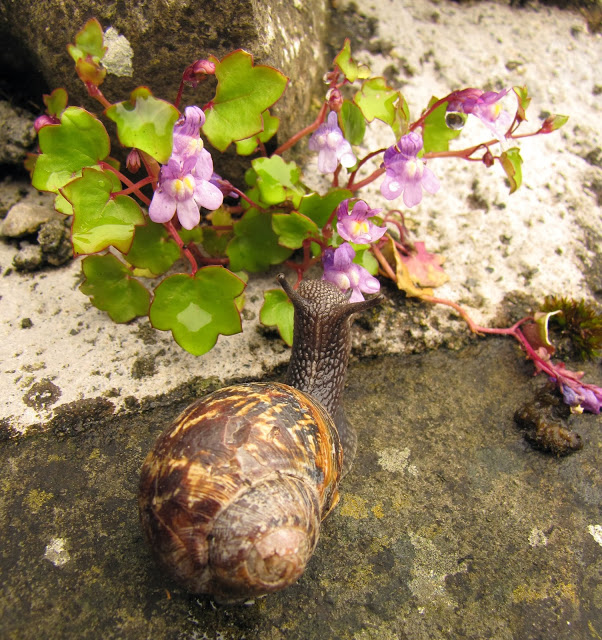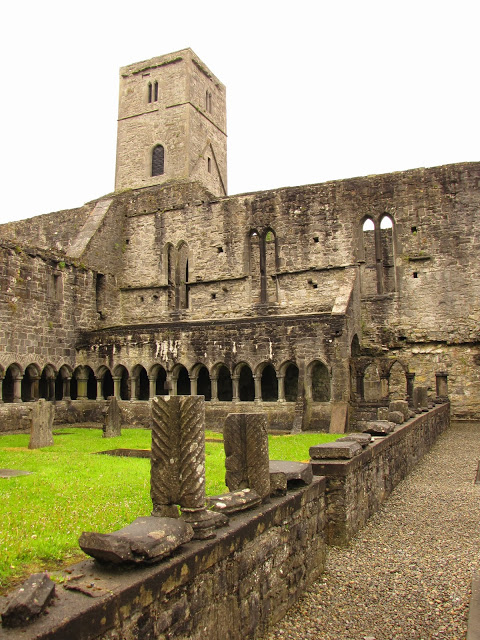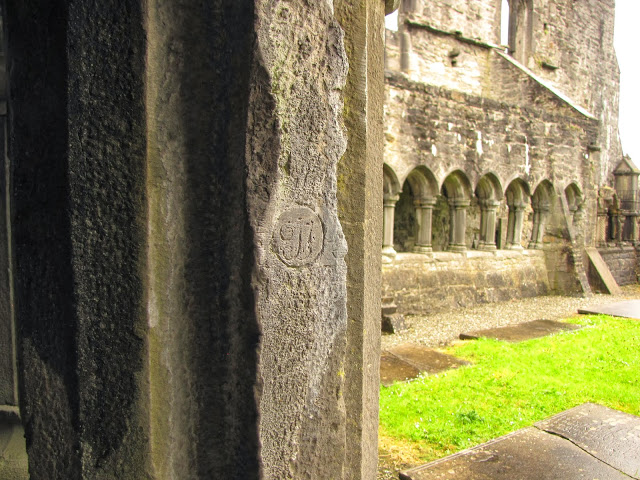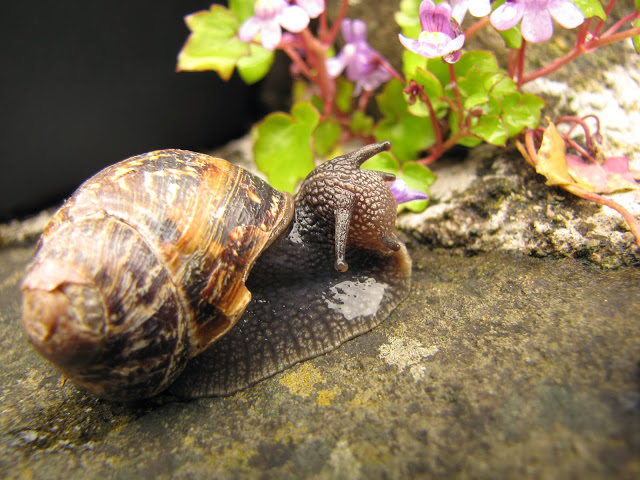
Back in the Republic of Ireland, we decided to call it a day and spend the night in the port town of Sligo (Sligeach), which Wikipedia tells me is the most populous area of Sligo County. It is also the setting for Sebastian Barry’s bleak but beautiful novel, The Secret Scripture, which relates the history of 20th century Ireland through the life of a nearly 100-year-old mental patient.
Despite Barry’s less-than-complimentary depiction of Sligo as a town defined by its harsh weather, closed minds, and divided politics, we found the people friendly and the city center, perched along the River Garavogue, lovely. It was also surprisingly popular, and we had to try several B&Bs before we could find one with a free room.
Most places were closed by the time we settled-in on Saturday evening, so we decided to wait for the friary to open before leaving in the morning. As a result, we were the first people there and had the site almost entirely to ourselves for the duration of our visit.
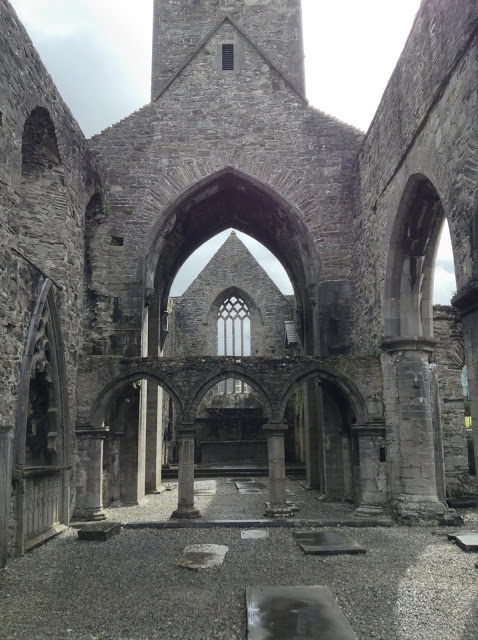
Although popularly known as Sligo Abbey, the monastic ruins near the town’s center are technically the remnants of a Dominican friary. The terminological slippage is quite common—most “abbeys” in Ireland are in fact friaries—and quite understandable, as the two types of structures are nearly interchangeable in both function and appearance. The most basic difference is simply that monks (and abbots) lived in abbeys, whereas friars lived in friaries. Because a monk’s lifestyle was generally private—focused on personal prayer and meditation—abbeys tended to be closed to the broader public. Friars, on the other hand, went on preaching pilgrimages and encouraged their communities to worship in their churches. Architecturally speaking, the differences are even more subtle. Friaries usually have tall, narrow bell towers, while an abbey’s tower is relatively short and broad.
Sligo’s friary was founded in c. 1253 by Maurice Fitzgerald when the town was still a Norman settlement. Some of this early building survives, although much of the friary was rebuilt in the 15th century. Its most unusual aspects include a 15th century rood screen, two elaborate tomb monuments, and the only remaining sculpted stone altar in Ireland.
Although the altar is probably the most significant feature of the site, we were even more taken with the local Gastropods, particularly the large and rather weathered specimen we still affectionately refer to as “the Sligo Snail.” Perhaps the most expressive invertebrate I’ve met, we watched him/her devour flowers for at least a quarter of an hour. If you’ve never seen a snail eat, I recommend checking-out Josh’s time-lapse of the process. It’s kind of adorable.
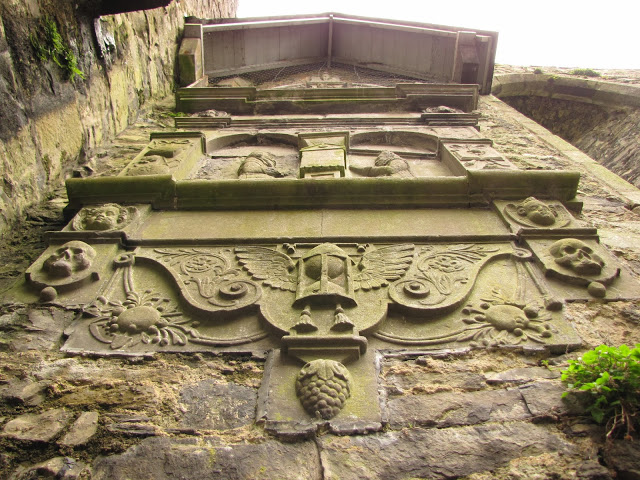
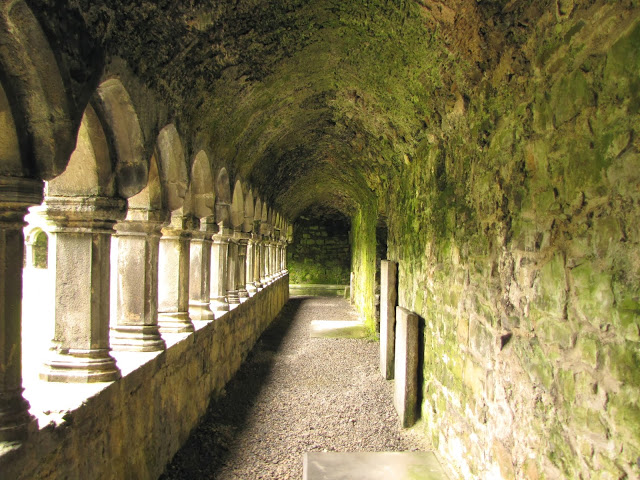
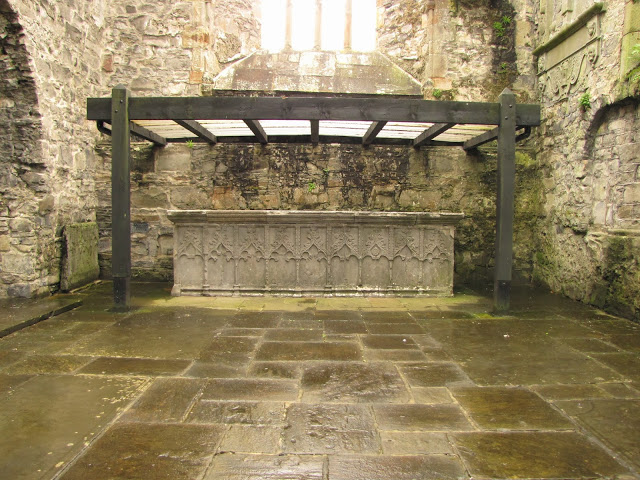
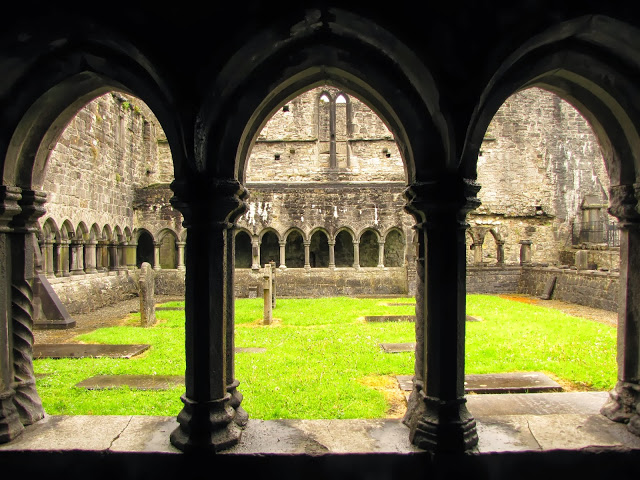
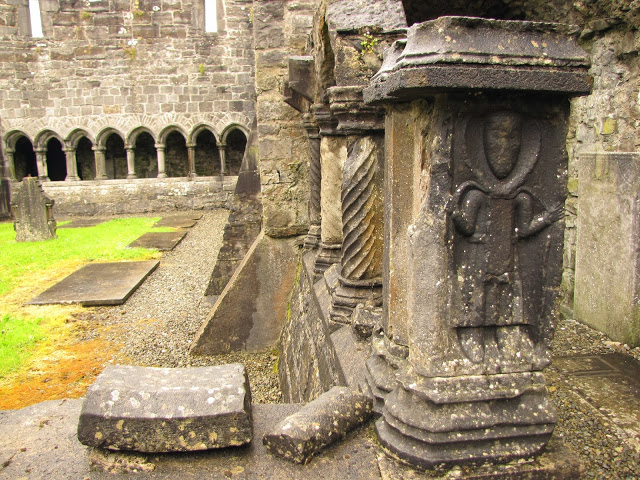
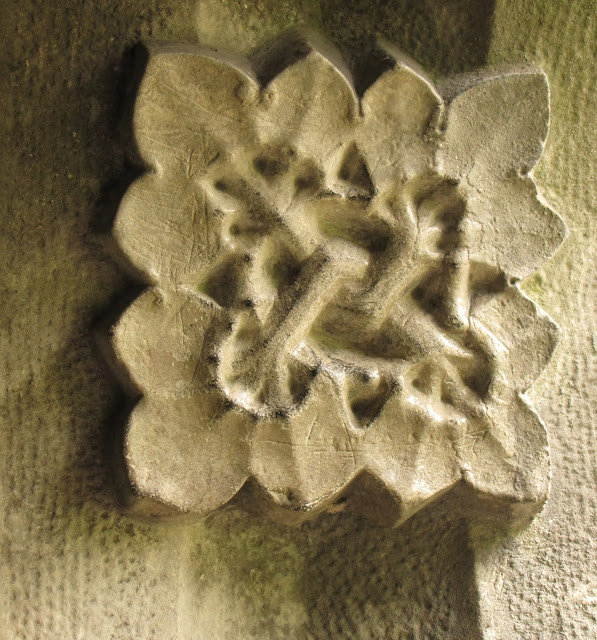
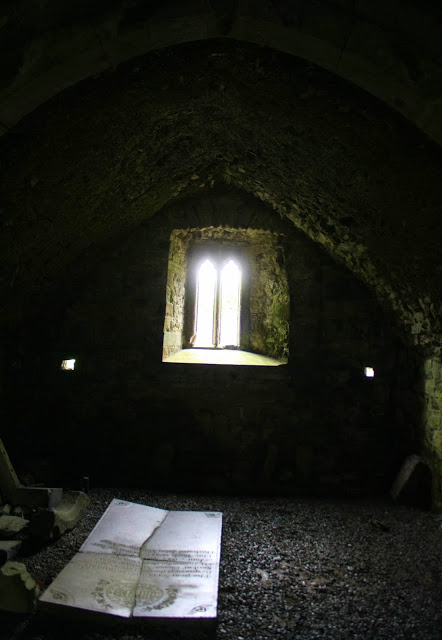
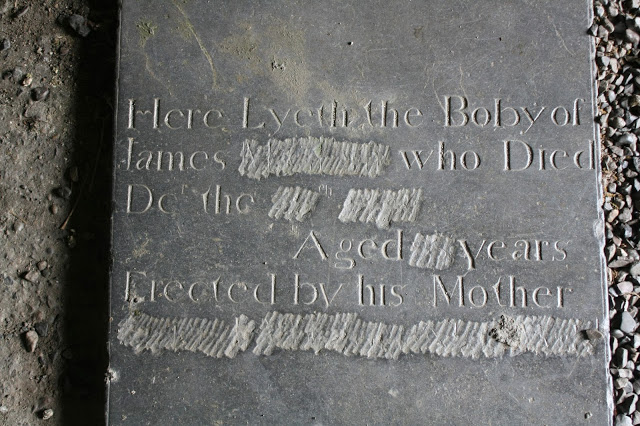
Unless otherwise stated, all photos by Renée DeVoe Mertz, May 26, 2013.
